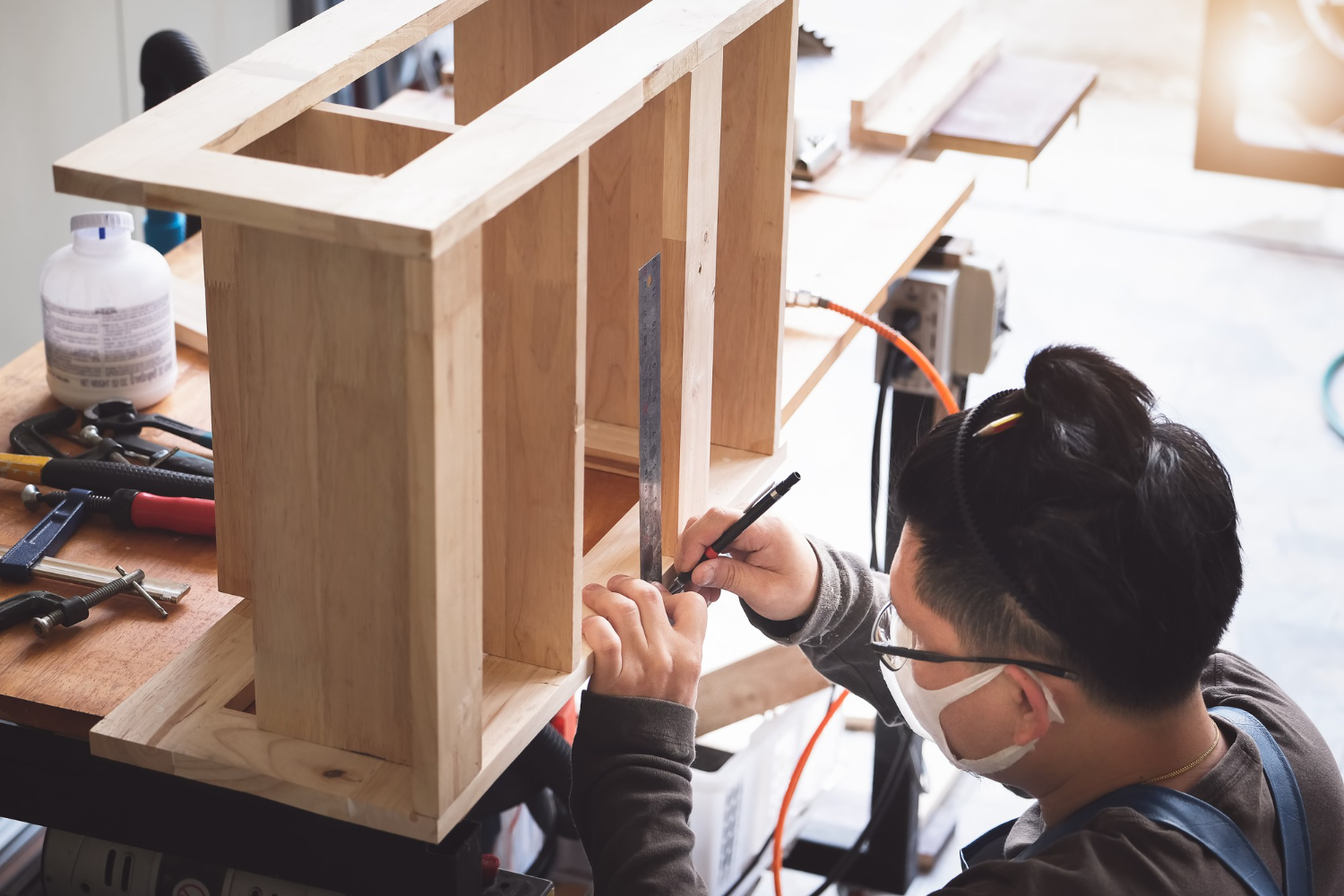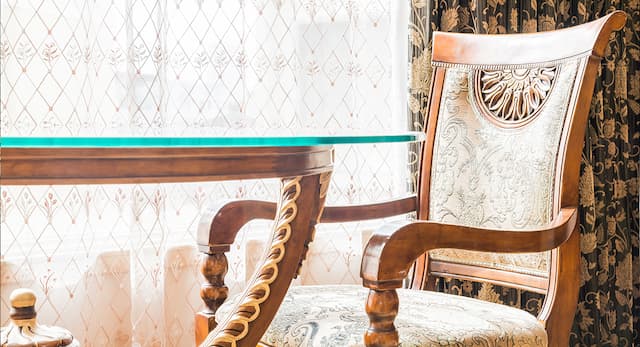Exploring a Comprehensive Loose Furniture Meaning in 2024
The term “loose furniture” is highly relevant in interior design conversations, but how we can pinpoint the exact loose furniture meaning as we enter the age of exotic designs and hyped trends?
Broadly speaking, loose furniture refers to movable, detachable furniture pieces that aren’t permanently fixed or built into the structure. However, the scope today extends far beyond the basics.
Next, we’ll try to offer an expanded loose furniture meaning along with its new and old types, customization, costs, and other aspects to provide a comprehensive understanding.
An Expanded Loose Furniture Meaning in 2024?

From storage to seating to décor accents, any movable, non-fixed furniture can qualify as “loose”.
The term may refer to any furnishings that are freestanding, movable pieces rather than fixed built-in or permanent elements.
Essentially, if you can pick it up and rearrange it around your space, it qualifies as “loose furniture”. This mobility and adaptability are the key distinctions between loose furniture versus architectural details.
Some of the most common categories of loose furniture include seating, storage, tables, beds, and decorative accents. Seating like sofas, armchairs, stools, and benches are classic examples of loose pieces that can be arranged and rearranged to your liking.
The same goes for storage furniture like bookshelves, wardrobes, dressers, file cabinets, and drawer units which are non-fixed. Tables are another versatile loose furniture type, from dining tables, coffee tables, and desks to side tables and consoles found in corridors.
Even within fixed built-in furniture like kitchen cabinetry or customized closets, separate loose components are incorporated. The base cabinet boxes, adjustable shelves, and roll-out drawers are built as loose pieces and then installed into the fixed framework.
This allows customizing storage and accessing components easier for repairs or upgrades. For example, a closet system has fixed walls but loose shelves, racks, and drawers added based on your needs.
Loose furniture offers great flexibility to alter layouts, switch pieces, and update quantities and styles. Their standalone versatility allows homeowners and designers to constantly reimagine interiors.
The loose furniture meaning today may encompass:
- Standalone cabinets, dressers, sideboards, display units
- Chairs, stools, benches of any style – dining bar, lounge, etc.
- Tables like coffee, side, accent, desks, dining sets
- Bookcases, shelving units, movable display cabinets
- Upholstered beds and headboards with adjustable frames
- Small décor items like mirrors, screens, clothing racks
- Modular seating options like individual poufs or sectionals
- Freestanding bathroom fixtures and storage units
- Portable kitchen and bar carts, islands on wheels
- Decorative yet functional items like room dividers, curtains
Old Types of Loose Furniture
Traditionally, loose furniture meant classic wood and upholstered options like:
- Ornate chests, cabinets, dressers, and wardrobes.
- Embellished wooden chairs like chaise lounges.
- Elaborate dining tables and nightstands.
- Upholstered beds with headboards, and footboards.
- China cabinets, writing desks, chiffoniers.
- Cane or fabric seated stools, benches, and settees.
- Glass-fronted bookcases and display cabinets.
New Types of Loose Furniture
Furniture manufacturing has evolved enormously, expanding its scope widely. Contemporary homes now seamlessly blend loose furniture like:
- Metal and glass coffee tables or TV units
- Plastic bar stools or molded dining chairs
- Acrylic storage cabinets and bedside tables
- Upholstered or leatherette adjustable beds
- Modular bookcases in steel, MDF, or plywood
- Computer desks and workstations in wood, laminates
- Wheeled kitchen islands, bar carts, and vanity units
- Wooden or rattan room dividers and folding screens
- Colorful poufs, ottomans, and bean bag seating
Manufacturing Custom Loose Furniture

The joinery process to craft customized loose furniture as per client preferences involves the following key steps:
- Collaboration with Designers
- Interior designer conducts consultations to understand aesthetic preferences
- Client mood boards are created collaboratively
- Key functional and style goals are identified
- Dimensions, quantities, and budgetary targets are set
- A comprehensive design brief summarizes all specifications
- Conceptualizing & 3D modeling
- The designer creates initial loose furniture sketches and renderings
- Digital 3D models are generated to visualize concepts
- The client provides feedback on 3D models to refine details
- Photorealistic renderings are produced for final concept approval
- Choosing Materials
- Material options like solid wood species, engineered wood, metals, stone, etc. are proposed
- Finish types - glossy, matte, distressed, painted, etc. are selected
- Upholstery textiles and leathers are shortlisted
- Environmentally responsible materials are recommended
- Samples are reviewed before final material confirmation
- CNC machining or Laser Cutting
- Digital models are converted into CNC toolpaths for precision cutting
- Machine software optimizes cutting pattern efficiency
- Components are machine-cut from wood panels, plastic sheets, metal, etc.
- Laser cutting also utilized for detailed patterning or engraving
- Molding or Hand Carving
- Decorative accents are molded from wood, plaster, polymers, etc.
- Artisans hand carve custom designs and textures
- Embellishments are incorporated into furniture pieces for unique detailing
- Assembling Parts with Joinery
- Components pre-drilled for screws, bolts, and dowels per the design
- Joinery like dovetails, mortise, and tenons used for specialty pieces
- Everything is assembled by skilled woodworkers and checked for fit
- Hardware like hinges, pulls, casters, etc. attached
- Applying Desired Finishes & Upholstery
- Stains, paints, oils, or lacquers applied by hand per specifications
- Upholsterers add padding, springs, etc. before applying the final fabric
- Care is taken to match grain patterns and fabric direction
- Finishing steps may be repeated for layered depth
- Quality Checks & Delivery
- Furniture was put together and then dismantled to inspect interior joinery
- Engineers verify structural stability and safety
- The design team cross-checks against the original brief
- Any final adjustments made before packaging
Cost of Loose Furniture

With so many variables, loose furniture budgets can easily vary from a few hundred dollars for a basic piece from a discount retailer to tens of thousands for a large custom-made statement piece from a luxury designer brand. Budgets for loose furniture vary widely depending on:
Materials
More expensive, high-end wood varieties (like teak, mahogany, and exotic imported hardwoods) can command premium pricing, while more affordable man-made boards like MDF, plywood, and particle board keep costs down. The quality and rarity of the wood impact price.
Customization
Furniture that is customized, made-to-order, or offers customizable features costs more than mass-produced, ready-made pieces. Unique carvings, inlays, finishes, upholstery, and other bespoke detailing add to the price.
Brands/Designers
Well-known upscale furniture brands and designs by famous designers or architects carry a premium versus mainstream or private label brands found at big box retailers. Brand value impacts perceived exclusivity and prestige.
Decorative Details
Special decorative accents like ornate wood carvings, inlaid stones, hand-painted motifs, metal inlays, and other embellishments require additional labor and materials costs. Simple unadorned surfaces are more affordable.
Scale/Size
In general, the larger the piece (Tables, beds, dressers, etc.), the higher the price due to higher materials costs and shipping weight. Smaller accent pieces like side tables and ottomans can be less expensive.
Outdoor
Furniture designed for outdoor spaces may cost more due to the need for weather-resistant materials and construction. All-weather wicker, anti-rust metals, UV-resistant fabrics, and waterproof cushions add cost.
Location
Pricing can vary according to geographic region and local market rates. Costs in a high-end metropolitan area may be higher than in a small town. Shipping costs also impact final pricing.
Discounts/Sales
Regular prices may be lower for furniture on sale or clearance. Limited-time promotions, coupons, seasonal sales events, and volume discounts can reduce costs to the buyer.
Final Thought
Far from basic movable pieces, the world of loose furniture today spans a vast spectrum of materials, designs, sizes, and functionality.
Its inherent versatility of layouts and its ability to transform spaces make it a necessity for almost any type of lifestyle in the 21st century.
From antique collectibles to minimalist adjustable beds, loose furniture empowers both homeowners and designers to restyle interiors on a whim.
PARTENZA is one of the leading manufacturers and suppliers of custom loose furniture in Europe and the Middle East. You can contact us directly to explore your options.
Frequently Asked Questions
What Are Some Benefits of Opting for Loose Over Built-In Furniture?
The ability to rearrange, replace, and remove pieces over time as needs evolve makes loose furniture more adaptable. They also allow the mixing of styles and customization.
Does Loose Furniture Work for Small Spaces?
Yes, options like nesting tables, multifunctional ottomans, and modular storage are perfect for small homes. Lightweight pieces can be moved around to maximize space.
How Often Should You Consider Rearranging Loose Furniture?
Every couple of months is ideal to give your space a fresh look. Some pieces like poufs can even be moved daily.
Does Loose Furniture Require Special Care or Maintenance?
Dusting, wiping, and spot-cleaning movable pieces more frequently is advisable. Also check for loose hinges, screws, etc. periodically.
Can You Incorporate Some Built-Ins Along with Loose Furniture?
Definitely! Combining fixed and loose pieces creates balance. Use built-ins for large installations like kitchen cabinetry and loose furniture for flexibility.
What Questions Should You Ask Before Customizing Loose Furniture?
Finalize needs and budget. Discuss styles, materials, sizes, and timelines. Ask about assembly, warranty, and maintenance. Inspect design prototypes before production.






